A WHILE BACK, I FOUND MYSELF IN A HOTEL CONFERENCE ROOM WITH THE BLINDS DRAWN, GLASSES AND PITCHERS OF WATER ON the draped tables, a projector for Powerpoint presentations, a flip chart and magic markers in the corner. This was clearly a place that had been equipped for some deep thinking. Fifteen or twenty of us were sequestered behind closed doors, charged with plotting the future direction of a major conservation group, and we were all contemplating a draft mission statement on the screen. While the wordsmithing went on, my attention was drawn to a phrase near the beginning: “We have an opportunity to create a world in balance, a world where human needs do not come at the expense of nature.”
I lingered a while over the notion of “a world in balance,” the quaint idea that, in spite of the constant shifts in everything from incoming solar energy and the orientation of the earth’s axis to the evolution of bacteria, it might be possible to establish some sort of stasis on an entire planet. Neither physics nor biology held out much hope for a balance, but I thought I knew what the authors of this draft were trying to say, so I drifted to the second half of the sentence: “a world where human needs do not come at the expense of nature.”
Creeping around in the background of that statement, unexpressed but palpable, is one of modern man’s most enduring prejudices— that, somewhere in our rise to enlightenment, we transcended our animal lineage and became qualitatively different, and distinctly better, than the menagerie that surrounded us. In this case, the phrasing went on to imply that we could find ways to live that made no demands on ecological systems— we could exist without appetite or impact, almost like angels.
The question is one of the most central issues in human thought: Are we a part of nature or are we apart from it? It haunts our discourse on philosophy and religion, shapes our debate on practical ethical matters from our appetite for meat to our concepts of animal welfare, and colors the way we use land and the resources it provides. Not too surprisingly, it emerges in nearly every discussion of conservation and the environment.
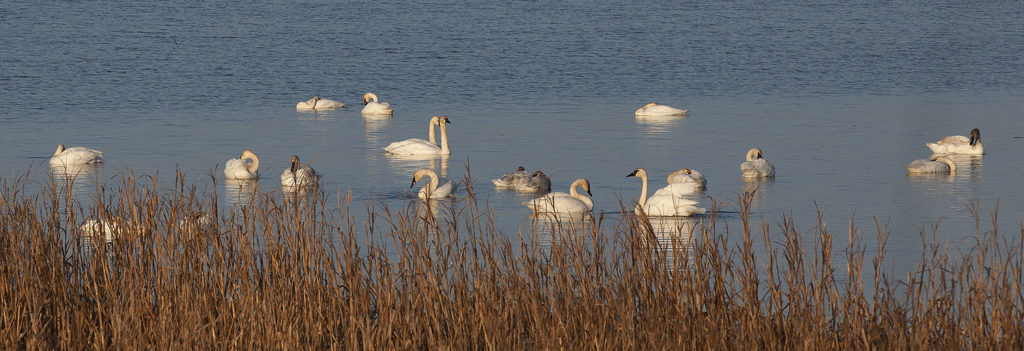
Trumpeter swans at Loess Bluffs National Wildlife Refuge in northwestern Missouri. (Photo copyright 2017, Chris Madson, all rights reserved)
Of course, the differences that distinguish us from all other living things are unmistakable, even though it’s proven remarkably difficult to build a quick, air-tight definition of what sets us apart. When I first stepped into a college classroom, anthropologists were describing us as the tool-using animal, but in the last forty years, we’ve found many examples of other animals, from chimps to sea otters to crows, that use tools. In some cases, these animals use items that are handy without altering them, but in others, they modify an object before using it, which calls into question the revisionist claim that we are the only tool-making animal.
It can be argued that, even if we can’t make an absolute distinction in this behavior, there is certainly a difference of degree: We’re much better at making and using tools than any other species, which has turned out to be a good thing for us, at least in the short run, since we can’t run, jump, swim, or fly nearly as well as other life forms do.
There’s no doubt that we’re unique; we fill a niche in the scheme of things, and we’re one endpoint in four billion years of selection for success. The same can be said of every other living thing that shares the planet with us. We’re different, for certain, but not necessarily better.
No one really knows when the concept of human exceptionalism began, but I suspect it’s a relatively recent development. Probably the earliest undeniable record we have of abstract human thinking comes from places like El Castillo Cave in northern Spain and Chauvet Cavern in southwestern France, where complex artwork was committed to the cave walls almost 40,000 years ago. Earlier engraved lines and dot patterns may be much older, but the images of game animals in these and other caves are testament to an advanced ability to translate three-dimensional reality into two dimensions, along with a remarkable eye for the unique anatomy of a number of wild animals, and the capacity to refine and apply pigments so that they last for millennia. The paintings suggest that those ancient artists understood the earth and its teeming life in much the same way as contemporary Stone Age cultures do. It seems likely that then, as now, people whose lives depended on good hunting and foraging for their livelihood felt a close kinship with other animals, a relationship that transcended the pragmatic and took on the trappings of religion.
Among the modern subsistence hunting cultures that have been studied, each species has its unique place in the world, but no species, not even man, exerts control over the whole. I don’t think it’s far-fetched to assume that the prehistoric hunters who painted in the caves felt much the same way.
It’s interesting that there are no strictly human figures among the artistic subjects at Chauvet or the more recent cave paintings in places like Lascaux and Altamira. The occasional images that suggest humans have the heads of bison or horses. Archaeologists have speculated that these may be drawings of shamans or possibly illustrations of visions from trances. Either way, they leave the impression that the people of that time and culture felt an intimate relationship with the living things around them— they saw themselves as a part of nature.
I suspect the shift in our attitude began with the domestication of key crops and animals some 13,000 years ago. It was a slow-motion revolution that may have stretched over 4,000 years or more and left no record beyond the melted remains of a few adobe huts, fragments of discarded tools and pottery, and the altered DNA in the organisms that led us into farming.
Before we began to farm, our lives and fortunes were clearly shaped by the same forces that defined success and failure for all the animals and plants around us. A severe drought or winter, an outbreak of disease, a shift in the constant push and shove between predator and prey all sent immediate ripples through the populations that supported us and inevitably took their toll on each tiny group of wandering humans they touched. By the time we had settled down, we’d created a domain we thought we could control. The natural world beyond the fence was no longer a part of a universal brotherhood; it was a potential threat. We were estranged.
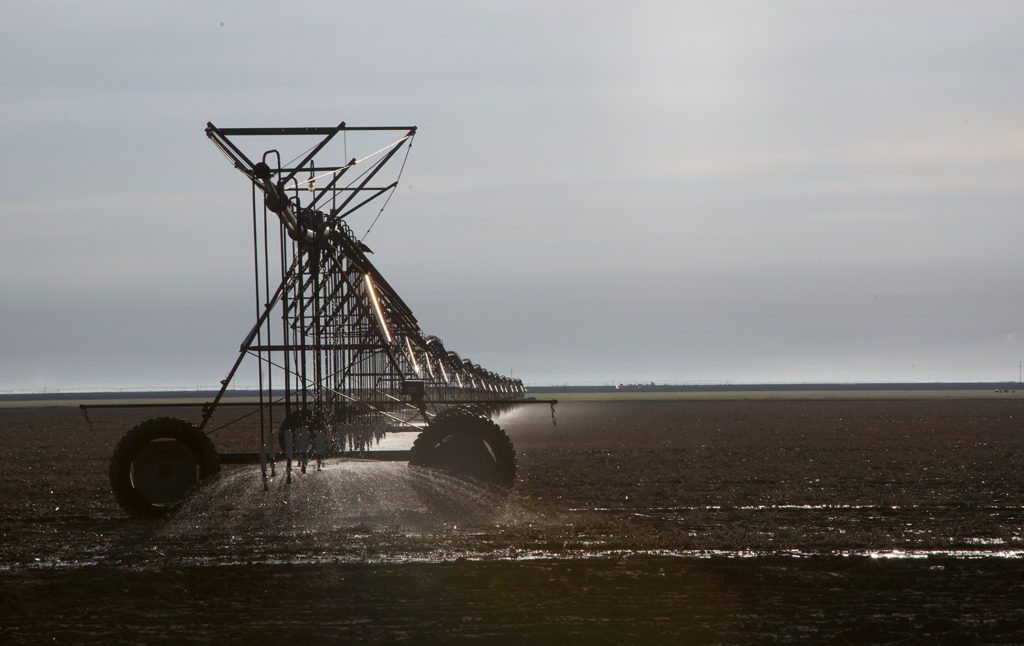
Center pivot irrigation system, Texas panhandle. (Photo copyright 2015, Chris Madson, all rights reserved)
Irrigation expanded our sense of control and eventually led to the first great cities, places where specialists in various trades could divorce themselves almost entirely from the daily demands of producing food. The world’s first written epic, “Gilgamesh,” arose from some of the earliest of those hydraulic cultures. It includes the wild man Enkidu, immensely powerful, drawing his strength from the wild world outside the control of the empire. Eventually, the emperor finds a way to domesticate the wild man and reduces him to the status of a slave, albeit, a valued slave, who assists the monarch in a series of adventures. Enkidu’s story reads remarkably like the biblical expulsion from Eden or the life of a modern office worker, set down in cuneiform 2,500 years before the birth of Christ.
As far as I can tell, these are the roots of the notion that the human animal stands somehow outside of nature— an idea that, in western culture at least, has complicated our thinking about our relationship with the earth ever since.
In its most extreme form, this concept has led to expressions of open hostility toward the unruly places that are seen to resist domestication. In the classic history of early colonial life in New England, Of Plimoth Plantation, the Puritan cleric William Bradford had this to say about the land he and his companions had chosen as their new home:
“What could they see but a hideous & desolate wilderness, full of wild beasts & wild men? And what multitudes there might be of them, they knew not Neither could they, as it were, go up to the top of Pisgah, to view from this wilderness a more goodly country to feed their hopes; for which way soever they turned their eyes (save upward to the heavens) they could have little solace or content in respect of any outward objects. For summer being done, all things stand upon them with a weatherbeaten face; and the whole country, full of woods & thickets, represented a wild & savage hue. If they looked behind them, there was the mighty ocean which they had passed, and was now as a main bar & gulf to separate them from all the civil parts of the world.” It was a view many Americans would take over the coming centuries.
One of the most succinct modern expressions of this attitude I’ve ever seen is literally cast in concrete on the University of Wyoming campus. Construction on the building that first housed the UW engineering department began in the early 1920s. In 1926, as the building neared completion, someone asked Earl D. Hay, dean of the college of engineering at the time, to compose a motto to be enshrined over the main entrance. After some thought, he came up with this: “Strive on; the control of nature is won, not given.”
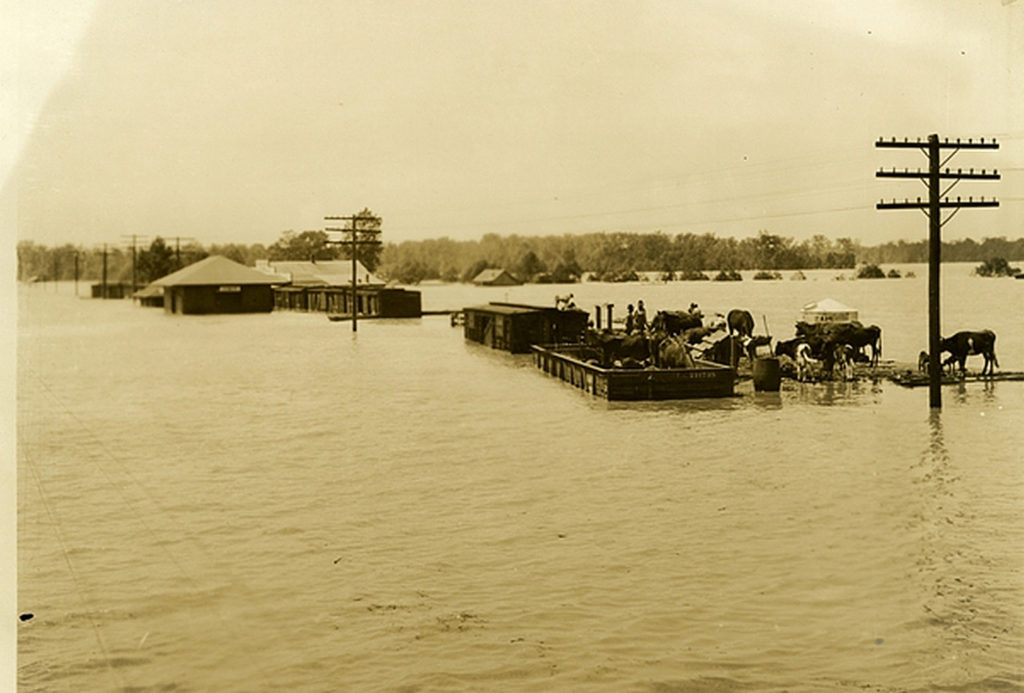
Photo of the Great Mississippi River Flood taken from the Y and M. V. Railroad station, Onward, Mississippi, May 5, 1927. Courtesy of the Mississippi Department of Archives and History.
I find it more than a little ironic that, in the spring of 1927, as Dr. Hay and his students were moving into the new building, the Mississippi River contested his notion that nature is susceptible to control. Always an unruly watercourse, the Mississippi had already been contained behind an extensive network of levees, but rain and snowfall across the heartland were unusually intense from August 1926 to the following April. Driven by nine months of exceptional runoff, the river ruptured the levees, flooded 127,000 square miles of bottomland, drove 700,000 people from their homes, and killed 250. And this rain-soaked winter immediately preceded the catastrophic ten-year drought of the Dust Bowl. Strive on. …
I’d like to think we’ve learned a few things since Dr. Hay issued his challenge to engineers and the implacable opponent he identified only as “nature”— although I have to say that some of our activities in the last decades shake my faith more than a little. However, for the sake of argument, I’ll concede that we may be beginning to think more in terms of cooperating with the land rather than dominating it.
Having said that, I still find us struggling with the fundamental question: Are we a part of nature or apart from it? The conservation and environmental communities are not immune. At one extreme is a specific group of hunters the sociologist Stephen Kellert has labeled “dominionistic” because they view wildlife and the rest of the planet as property to be disposed of as people see fit. The human species, in this view, stands clearly apart from, and somehow above, the rest of the natural world.
But many of these hunters speak movingly of their outdoor experiences— it’s why they take the time and trouble, go to the expense, involved in hunting. They feel involved in natural processes when they’re in the field, and often, they place a high value on the meat they bring home. It gives them a sense of connection. They see themselves as apart from the natural world in the authority they have over it but very much a part of the natural processes and landscapes they enjoy.
Animal rights activists represent another extreme. They’re passionate about the kinship between people and the rest of life on earth. We are a part of nature, they argue— animals are our brothers. But they are morally repulsed by the idea that humans would participate in some of the most basic processes in the natural world, like eating meat and killing other animals to get it. They see humans as unique moral beings— a part of the natural world in our genes, but apart from the natural world in our moral responsibility.
Somewhere in the middle, there is the well-meaning phrase in that organizational mission statement: “a world where human needs do not come at the expense of nature.” It’s a mainstream sentiment, one that would fit nearly any conservation group, but it implies a sharp division between “human” and “nature.”
From a strictly ecological point of view, that’s sheer fantasy. Every physical need we have is filled “at the expense of nature,” as the drafters of this language know as well as I do, but when challenged with expressing an overarching mission, they struggle to acknowledge our dependence and leave the impression that billions of people could somehow find a way to live and prosper without making any demands on the planet that supports us all.
The roots of the conservation movement reach back much further than most history books recognize. Alarmed by the disappearance of their deer, the residents of the town of Portsmouth, Rhode Island, outlawed spring deer hunting in 1647. And the notion of providing some protection for wildlife was not new in the New World. It stretches back through the game preserves of kings and nobles to the Fertile Crescent and the reign of the Assyrian emperor Ashiburnipal.
Through all those centuries down to the first effective conservation efforts in America, we approached the task much as we approached our backyard gardens. We admired some things for their beauty, some for the way they tasted. We set aside a corner out back, cultivated it, built a fence, and chose the varieties we wanted to grow.
Early in the development of wildlife management, its advocates used the metaphor of the garden to explain how they thought about the process. There were stocks of wildlife that needed our attention, and if we watered and weeded with sufficient care, we would eventually have a crop to harvest. A good gardener was careful not to overharvest his perennials so they would yield another crop next year, and with the annuals, he made sure not to eat all the seed so he had something to plant the following spring. A little prudent thinning down the row helped production. So did a little manure. It was a useful metaphor, as far as it went, emphasizing the renewable nature of the “resources” we managed in a way that an agrarian population could readily appreciate.
But it had its limits. There was a casual chauvinism in the distinctions we made between crops and weeds that often failed to recognize the interdependence of the organisms we were managing or the processes that supported them. With a certainty bred of ignorance, we did things that seemed like a good idea at the time, only to discover years or decades later that we had failed to account for some key variables.
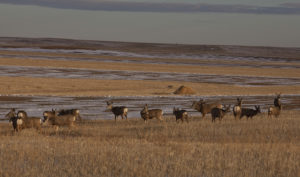
Mule deer on wheat stubble north of Burns, Wyoming. (Photo copyright, 2018, Chris Madson, all rights reserved)
The collapse of the mule deer herd on Arizona’s Kaibab Plateau was among our first lessons in America. Massive predator control and highly restricted hunting allowed the population to grow from 4,000 animals to between 50,000 and 100,000 in a matter of eighteen years between 1906 and 1924. Conservationists celebrated until the herd finished chewing the last of its forage down to the roots and collapsed from its own too-much.
In the early years of the twentieth century, the people of Wyoming began feeding elk to keep them off private stocks of hay. Eventually, there were more elk than private citizens could afford to feed, so state and federal governments took over the program. It seemed like a durable compromise, an expensive but effective way to have elk in the mountains while avoiding conflicts with ranchers on winter range in the valleys. Until brucellosis came along. And the possibility of chronic wasting disease.
We thought common carp would be a welcome addition to the nation’s fisheries, and in spite of a hundred years of bad experience with that introduction, we subsequently decided to import grass carp. And black carp. And silver carp. We weren’t satisfied with the interior West’s native trout, the cutthroat, so we brought in brookies and rainbows, and German browns and mackinaw and walleye and broadcast them over the landscape without considering the
possibility that some or all of them might not coexist comfortably. We dammed nearly every river in the region without bothering to think about how a wall across a river might affect the movements of salmon, sauger, sturgeon, humpback and razorback chubs, Colorado pikeminnows, and the host of lower-profile wild things that must move up and down a watercourse to survive the floods and droughts that shape it.
Sometimes, visualizing a garden isn’t the best way to think about the world.
The garden metaphor carried another message, too. Was that subtext accidental or intentional?— I can never decide. Either way, it was easy to jump to the conclusion that we owned the garden. We could decide how big it should be. If we suddenly decided that we needed another wing on the house or a new shed, we could move the beds or cut them in half, and if the crops and ornamentals were more trouble than they were worth, we could lay down some weed barrier, cover it with rocks, and give up the whole exercise. The garden, while often useful and sometimes entertaining, was something we could do without. We were apart from it.
I’m the first to concede that our willingness to provide for natural systems has grown with time. Here in Wyoming, we have the world’s first national park and first national forest, both monuments to our changing perspective. In the last forty years, we’ve made a commitment, however uneasy, to preserve native biodiversity by protecting rare species, whether they are charismatic or not, and we’ve begun to appreciate that an organism can’t survive without the wild places that shelter it, a perception of habitat that demonstrates a growing ecological sophistication.
But we still struggle to come to grips with our place in it all. Do we exist on some higher plane, out of reach of “the thousand natural shocks that flesh is heir to”? Are we overseers, partners, or just participants, feeling our way toward survival like every other living thing on the planet? Is the impulse to protect wildlife and wild places an act of selfless charity or self-preservation?
Conservation is defined as “wise use.” There are many paths to that wisdom. Science reveals the unimaginable complexity of natural systems and helps clarify the way human actions ripple through them. If we spent more on research, we would have a better grasp of the challenges we face and the often unintended effects our decisions have.
But a technical grasp of the situation isn’t enough. We need to come to terms with the emotional and ethical ties that bind us, not only to each other, but to every other living thing.
So here’s how I see it. It’s time to return to a reality the artists in Chauvet Caverns understood and that we, in our technological hubris, have long abandoned: The human animal is a part of the natural world. Skin and bone, flesh and blood, right down to the last strand of DNA, we are creatures of the earth. We depend on it for food, water, shelter, raw materials, the very air we breathe. It shapes our conscious and unconscious, our minds and souls. It defines us.
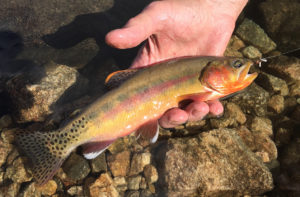
Golden trout in Montana’s Beartooth Mountains. (Photo copyright 2016, Chris Madson, all rights reserved)
We should return to the idea that all living things are interdependent. Diversity yields stability, an ecological truth that is, at once, practical and esthetic. As Aldo Leopold so wisely observed: “to keep every wheel and cog is the first precaution of intelligent tinkering.” At the same time, we need to come to grips with the fact that many of the natural processes on which the living world is based are violent and cruel. Predation, parasitism, catastrophic loss of habitat, the killer winter, the grinding drought, the endless competition for resources and even space, as savage as they may seem to a human wrapped in a cocoon of his own making, are facts of life, inextricable parts of the whole. They are sources of great suffering and, at the same time, the forces that produce what we most admire in ourselves and the rest of the natural world— grace, beauty, strength, ingenuity, courage, commitment to family and social unit. Even now, at the pinnacle of our technological power, we are not free of these primal forces, nor of our need for the sustenance the earth provides. We can’t suspend our impacts, direct and indirect, on other living things; the best we can do is to make sure our demands are sustainable. Other species have found ways to restrain their demands to match the supply their environment provides. We must find our own path to that way of living, or the inevitable forces of the planet will intervene to find it for us.
We are a part of nature. Nature is a part of us. From the simplest viruses to the most complex life on earth, we’re all in this together. I don’t know that accepting this will make our decisions concerning the land any easier, but there’s a good chance it will make them better.
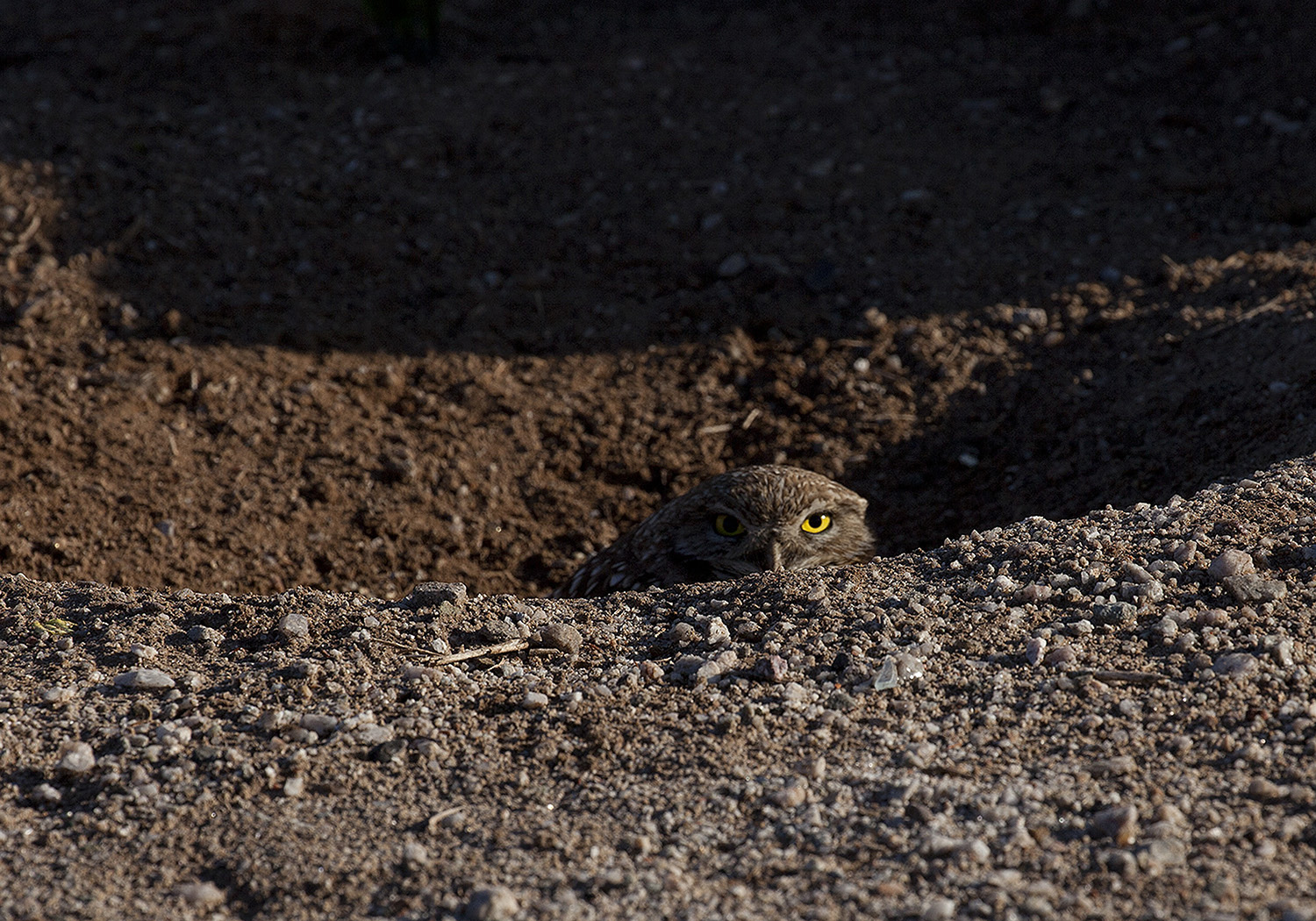
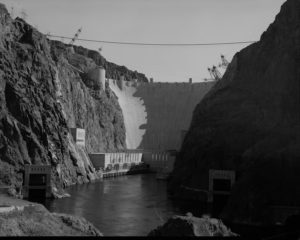
Leave a Reply
You must be logged in to post a comment.